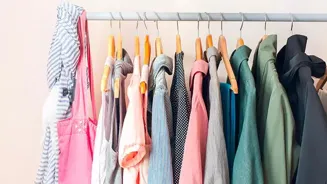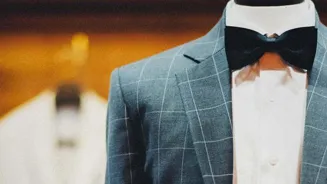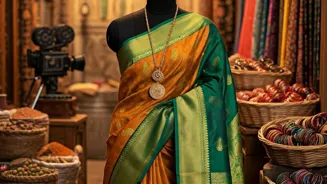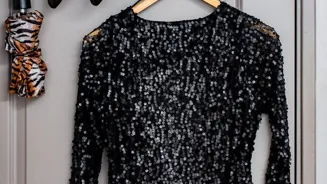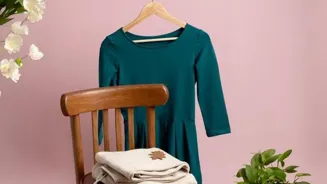For consumers, the capsule wardrobe offers a strategic balance of function, style, and sustainability.
The capsule wardrobe, a concept centered on owning
a limited number of versatile clothing items that can be worn interchangeably, is gaining renewed traction in 2025. As consumers grapple with both the environmental implications of fast fashion and the economic pressures of inflation, seasonless, multifunctional clothing has emerged as a practical and sustainable solution. Market data indicates that the shift toward intentional wardrobe building is not only influencing consumer purchasing patterns but also reshaping retail strategies.
Defining the Capsule Wardrobe
A capsule wardrobe typically consists of 25 to 40 items, each selected for versatility, durability, and timeless style. Key components often include:
- Neutral-toned tops and shirts
- Well-fitted denim and tailored trousers
- Layering-friendly knitwear
- A classic blazer and outerwear piece
- Minimalist footwear suitable for multiple occasions
- The emphasis is on high-quality fabrics, interchangeable color palettes, and designs that can transition across seasons with minimal adjustments.
Market Trends Driving Adoption
The global apparel market has seen an increased focus on “buy less, buy better” principles. According to a 2024 report from McKinsey & Company, 68% of surveyed consumers expressed interest in reducing clothing purchases while prioritizing higher-quality items. Rising living costs have reinforced this preference, with many shoppers seeking longer-lasting garments that can reduce replacement frequency.
The capsule wardrobe aligns with broader sustainability goals, particularly in Europe and North America, where regulatory initiatives are encouraging reduced waste in fashion. The European Union’s proposed Textiles Strategy for Sustainable and Circular Textiles aims to promote durability standards, which naturally supports the concept of seasonless, interchangeable wardrobes.

Retail Adaptation
Retailers are responding by introducing dedicated capsule collections and highlighting “core” lines in marketing campaigns. High-end brands are also investing in capsule-friendly designs. Luxury houses like Max Mara and Loro Piana emphasize neutral color palettes and premium fabrics to position themselves as long-term wardrobe investments.
Economic Benefits for Consumers
A capsule wardrobe offers clear cost-per-wear advantages. While initial investment per item is often higher, the extended use and reduced frequency of replacement lead to lower overall spending over time. This approach also minimizes impulse purchases, as wardrobe additions are typically planned to ensure compatibility with existing pieces.
Additionally, capsule wardrobes can reduce decision fatigue, a factor increasingly cited by consumers as a reason for simplifying clothing choices. A smaller, coordinated wardrobe streamlines daily outfit selection, appealing to time-pressed professionals and minimalism-focused consumers.
Environmental Implications
From an environmental perspective, the capsule wardrobe directly supports waste reduction. The Ellen MacArthur Foundation reports that the average lifespan of a garment has decreased by 36% in the past 15 years, largely due to fast fashion’s influence. By focusing on durable materials and classic designs, capsule wardrobes can extend garment use well beyond industry averages, lowering textile waste volumes.
Capsule dressing also aligns with the shift toward circular fashion systems. Items are more likely to be resold or donated when still in good condition, creating secondary market value and further extending product lifecycles.
Global and Cultural Adoption
While the capsule wardrobe concept is well established in Western markets, its adoption is expanding globally. In Japan, the principle aligns closely with Danshari, a minimalist lifestyle practice emphasizing decluttering and intentional consumption. In Australia and New Zealand, capsule dressing is gaining momentum among consumers in rural and coastal regions, where practical clothing needs outweigh trend-driven purchases.
In emerging markets, capsule wardrobes are being promoted as aspirational, with influencers and stylists framing them as an efficient way to enter the premium fashion space without overconsumption.
Challenges to Mainstream Expansion
Despite growing popularity, capsule wardrobes face barriers to mass adoption. Fashion remains a form of self-expression, and some consumers resist the perceived monotony of a limited wardrobe. Additionally, retail sales models built on frequent product turnover may find it challenging to profit from slower purchase cycles.

Brands are addressing this by integrating limited seasonal updates into capsule offerings, ensuring consumers can refresh their wardrobes without replacing core pieces entirely. Digital wardrobe planning tools and AI-powered styling apps are also helping consumers visualize how new items integrate with existing clothing.
Industry analysts predict that the capsule wardrobe movement will continue to grow over the next five years, particularly as regulatory measures, environmental awareness, and cost pressures converge. While it is unlikely to replace trend-driven consumption entirely, it is positioned to become a stable, long-term segment of the global apparel market. For brands, it presents both a challenge to traditional sales models and an opportunity to build loyalty through quality and trust.
